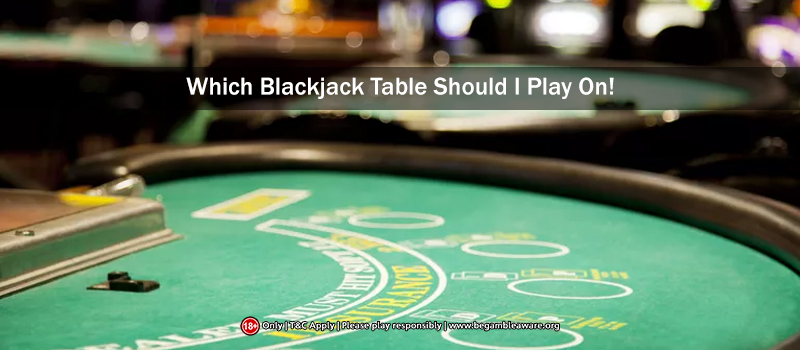
Perhaps, the most frequently asked question on Blackjack from newbies and professionals alike is about finding the perfect table!
Yes, nothing about rules, shortcuts, and tricks to win some extra dough, but learning to find the best Blackjack table. Most people are quite anxious to play the first hands, so much so that they simply rush themselves onto an unoccupied seat. There are quite a few conditions, which you need to consider, such as the playing rules, the betting limits, and the blackjack payoff. Moreover, things also depend on the fact whether you are a recreational player or a card counter. We will cover them all one by one.
Table Betting limits
This is the very first criterion for success. In the history of Blackjack, this is perhaps the most commonly faced scenario by players who rush into playing. The trajectory is usually like this: a player sits at a blackjack table, puts money on it, and asks the dealer for chips. And as he proceeds to put a red chip in their betting spot, the croupier stops them from making a bet that’s less than the prescribed betting limit.
It’s at this time they notice that they hadn’t noticed the signage on the table stating the threshold and maximum betting limits mentioned there. But the fear of getting admonished isn’t the only reason why you should look out for the betting limits before sitting down to play.
If you have limited money to spare, then you should definitely sit down at a blackjack table that has really low betting requirements. This would take you to scout through the different casinos, and if that’s too much work, you can simply call up the different casinos and tell them to connect you to the blackjack pits.
Playing rules
This is another important criterion that verily determines your success rate in a casino. Nowadays, rules aren’t the same across all the blackjack tables in a casino, and some tables are favorable for the player, while others are not so favorable. But the dealers or the casino manager aren’t going to tell you which are the tables that have the best rules, and you have to find it out yourself.
So, here we are listing the rules which would favor you:
- The croupier stands on all 17s
- The player blackjack doesn’t pay 7-5 or 1-1, but definitely 3-2
- After pair splitting, you can double down
After you have successfully tracked down a table, you need to check how many decks of cards are there on the table. The more the number of decks, the lesser chances of winning for the player for obvious reasons. In a casino where there are more than two decks, the count of decks may either be six or eight, and a dealing shoe will deal the cards. Just ask the croupier or the floor supervisor if you are unsure about the deck count on any particular blackjack table.
Role of CSM
One important point to note is that many casinos nowadays use CSM (Continuous Shuffling Machine), where the cards are inserted after every round gets over. Consequently, all the unplayed cards get randomly shuffled with the played ones, leaving the dealer no chance to pause and shuffle the cards manually. This leads to more hands being dealt per hour, and players have to expose more of their budget or bankroll, and that results in more hourly losses. So, those who are recreational players should definitely avoid blackjack tables with CSM.
But what to do if there is not a single table without CSM? Well, for such times, recreational players got to adapt and start looking for tables that have seats left only for one or two players. That’s because even if more cards are dealt on an hourly basis, you have to expose fewer of your bankroll to the house edge.
Let’s say, a recreational player is sitting at a blackjack table with a decent mix and number of players, and that too at a favorable table. The house edge stands at 0.5%, and his average bet is USD 10 per hand for a four-hour session. Here are the losses that they would incur:
The player will be dealt with about 250 hands an hour, which means 1,000 hands over 4 hours. If he bets USD 10 per hand, it amounts to a massive amount of USD 10,000. So, with a house edge of 0.5%, the theoretical loss is USD 50. Now, if we take the same scenario for a blackjack table with 5 players, they will be dealt approximately 60 hands an hour, and with the same house edge, the loss is merely USD 12. This is the difference between playing a full table and a heads up.
EndNote
Honestly, it doesn’t really matter which blackjack table you sit on, but if we had to point out the most favorable position, it’s on the dealer’s right-hand side. The only reason is, that games usually start from the left, giving you more time to decide your blackjack strategy. But watch out, the last seat is also more prone to proper scrutiny. So, good luck, keep calm, and decide what your next move would be keeping in mind all the above-mentioned rules.